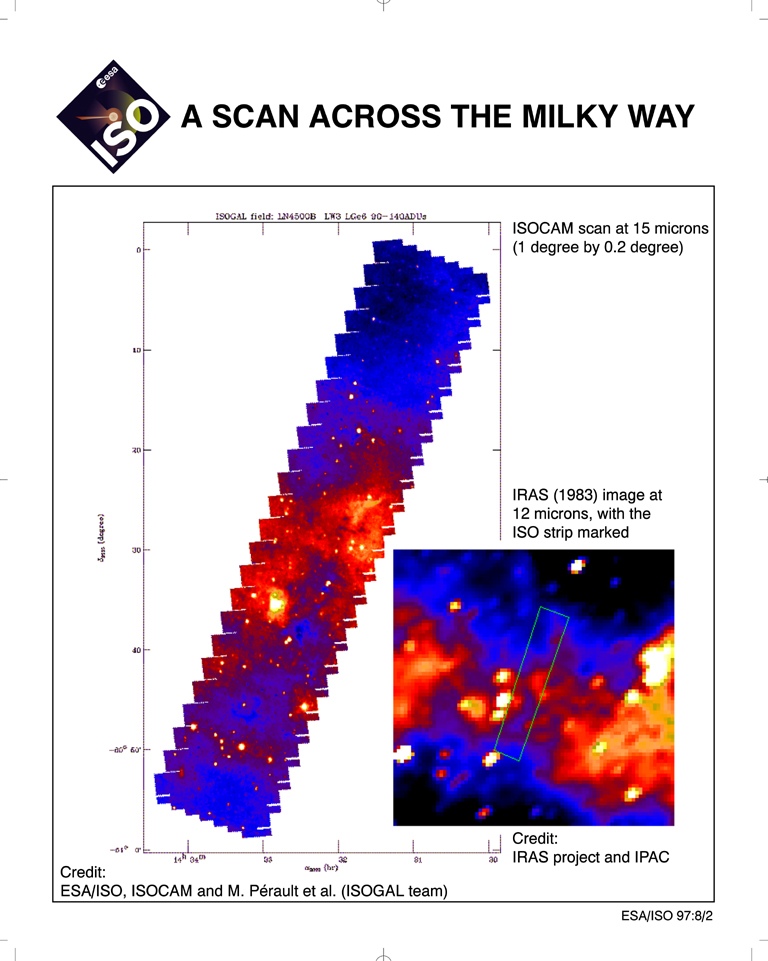
The Following text was taken from the ESA Science site: URL: http://isowww.estec.esa.nl/science/
The bloodstream of the Galaxy, the interstellar material that rejuvenates it in a cycle of stellar death and rebirth, appears in an image generated by the camera ISOCAM in ESA's Infrared Space Observatory ISO. It scanned a strip at right angles to the line of the Milky Way in the constellation Centaurus. The Milky Way is lit by millions of distant stars congregating the disk of the Galaxy, but dark dust clouds often hamper the view by visible light. The dust was created from chemical elements released by other stars that have now expired, and processed during a long exist
The dark clouds glow strongly in infrared light. The infrared intensities are here coded in false colours. The brightest regions are depicted in yellow, while the faintest emissions are blue or black. Small yellow dots are stars, while the larger yellow regions are dense and dusty infrared-emitting clouds where star formation is in progress.
The accompanying image shows the same sector of the Milky Way Galaxy as observed by the Dutch-US-UK Infrared Astronomy Satellite IRAS in 1983. IRAS scanned the whole sky at four infrared wavelengths. Here IRAS depicts the clouds of the Milky Way with broad brush-strokes, at 12 microns wavelength. ISO reveals much more detail in its closer examination of the selected strip, at 15 microns.
The large bright blob near the middle of the strip is probably 15,000 to 20,000 light-years away and comparable with the famous and much closer star-making cloud of the Orion Nebula. Astronomers judge it to be a moderately active star-forming region. Nearby (down and right) is a blue-coded region, spidery on shape, too dense and cold for even ISO to penetrate at 15 microns wavelength. Other dense patches occur on either side of a smaller bright blob to the right of the main one.
An ISO team (ISOGAL) is sampling the Milky Way in this manner, in a series of strips at right angles to the disk of the Galaxy. They spread for a third of the way around the sky, on either side of the centre of the Galaxy, which lies in the constellation Sagittarius.
Credits: ISO scan: ESA/ISO, ISOCAM and M. Pérault et al. (ISOGAL team) IRAS field: IRAS project and IPAC
Reference:"First ISOCAM images of the Milky Way", Pérault, M. et al.
INFRARED PROCESSING AND ANALYSIS CENTER